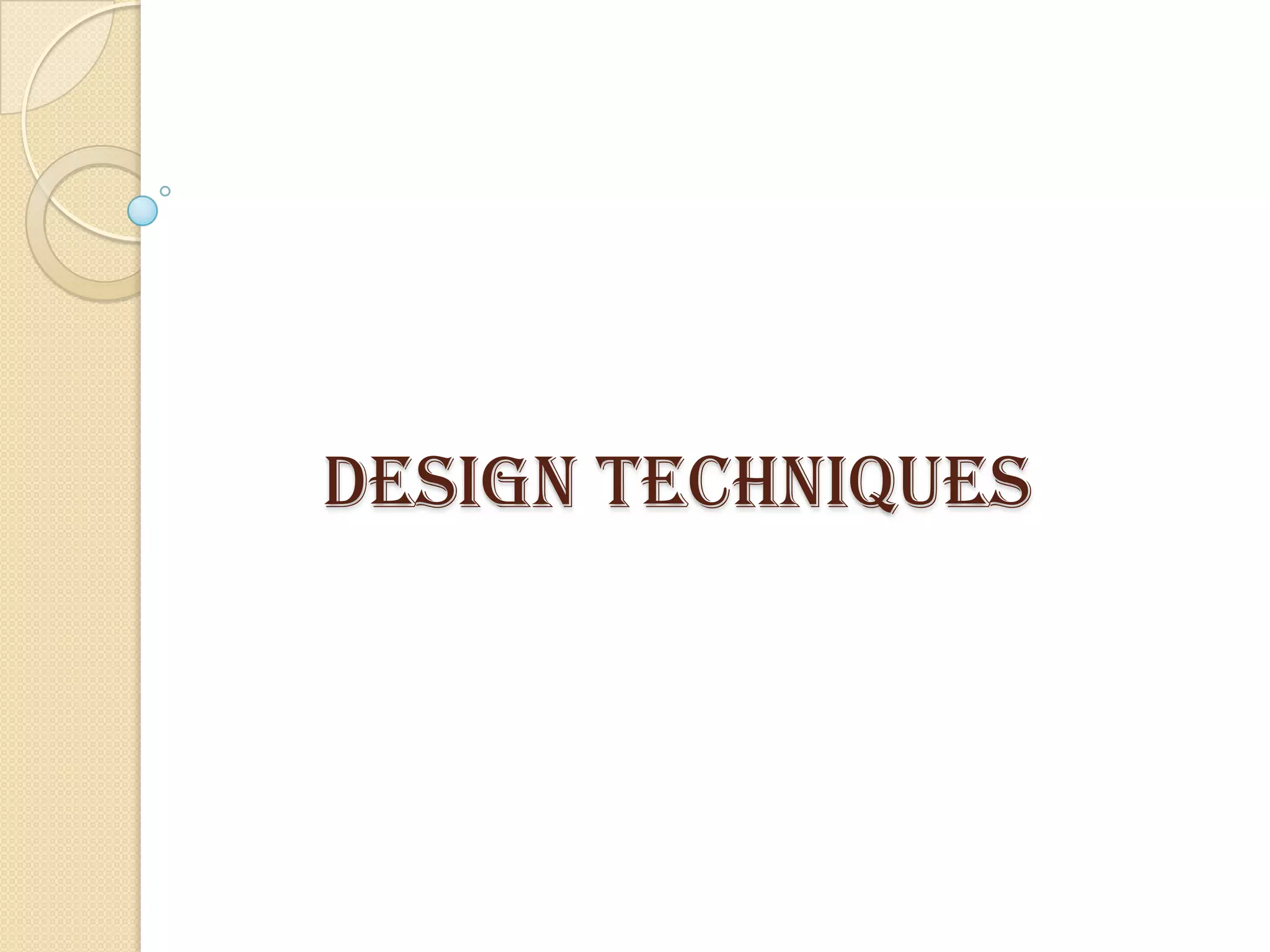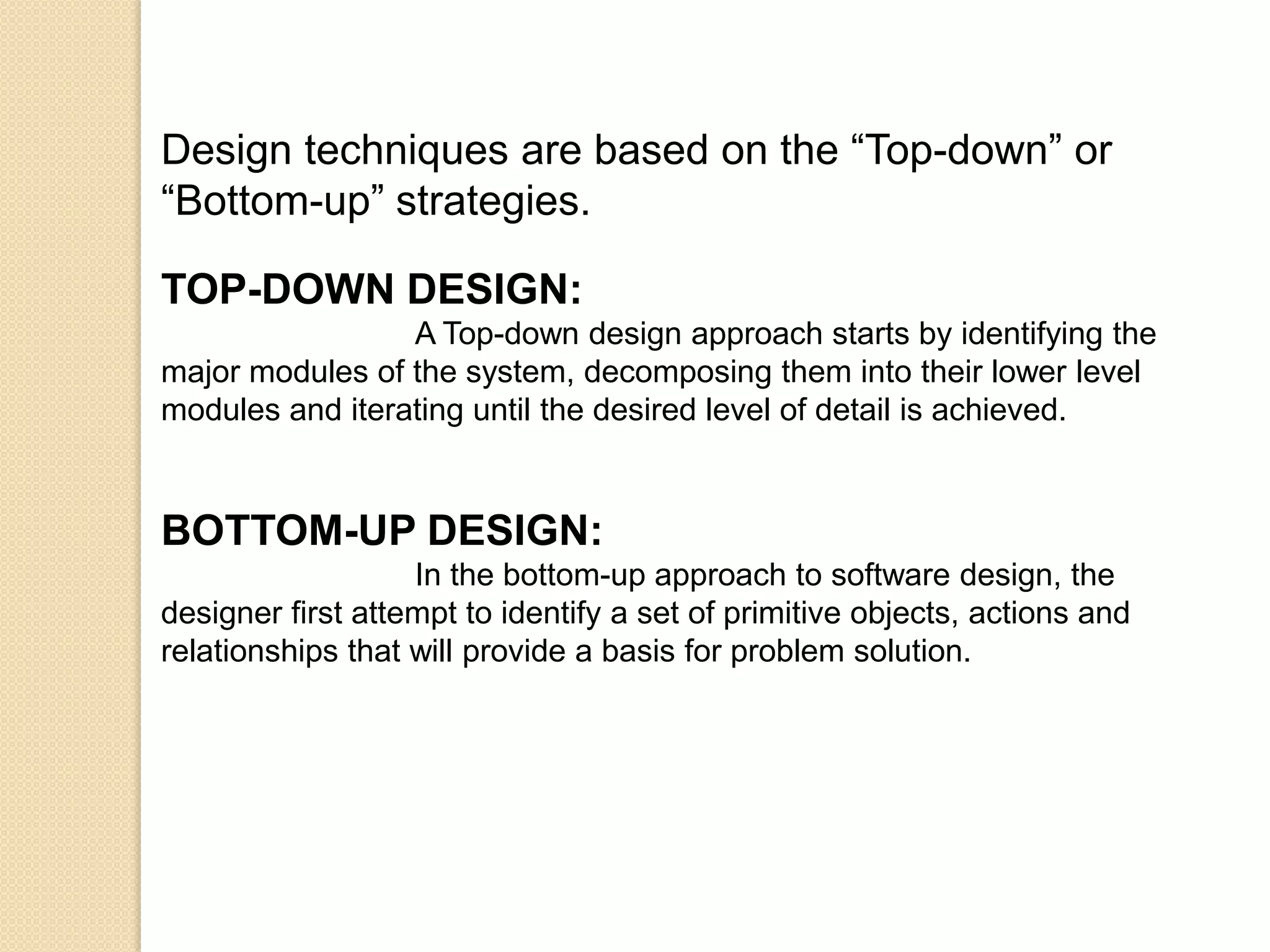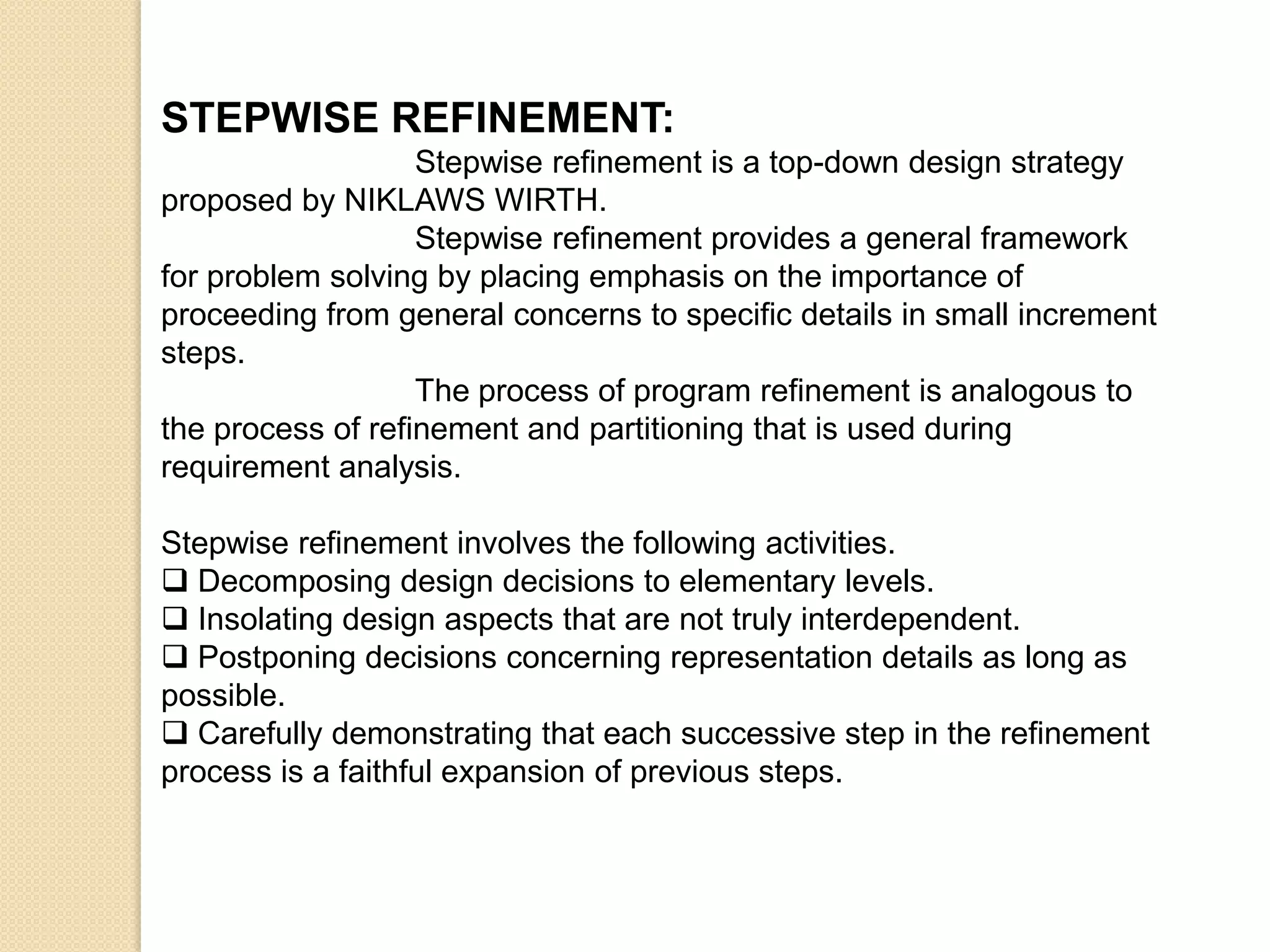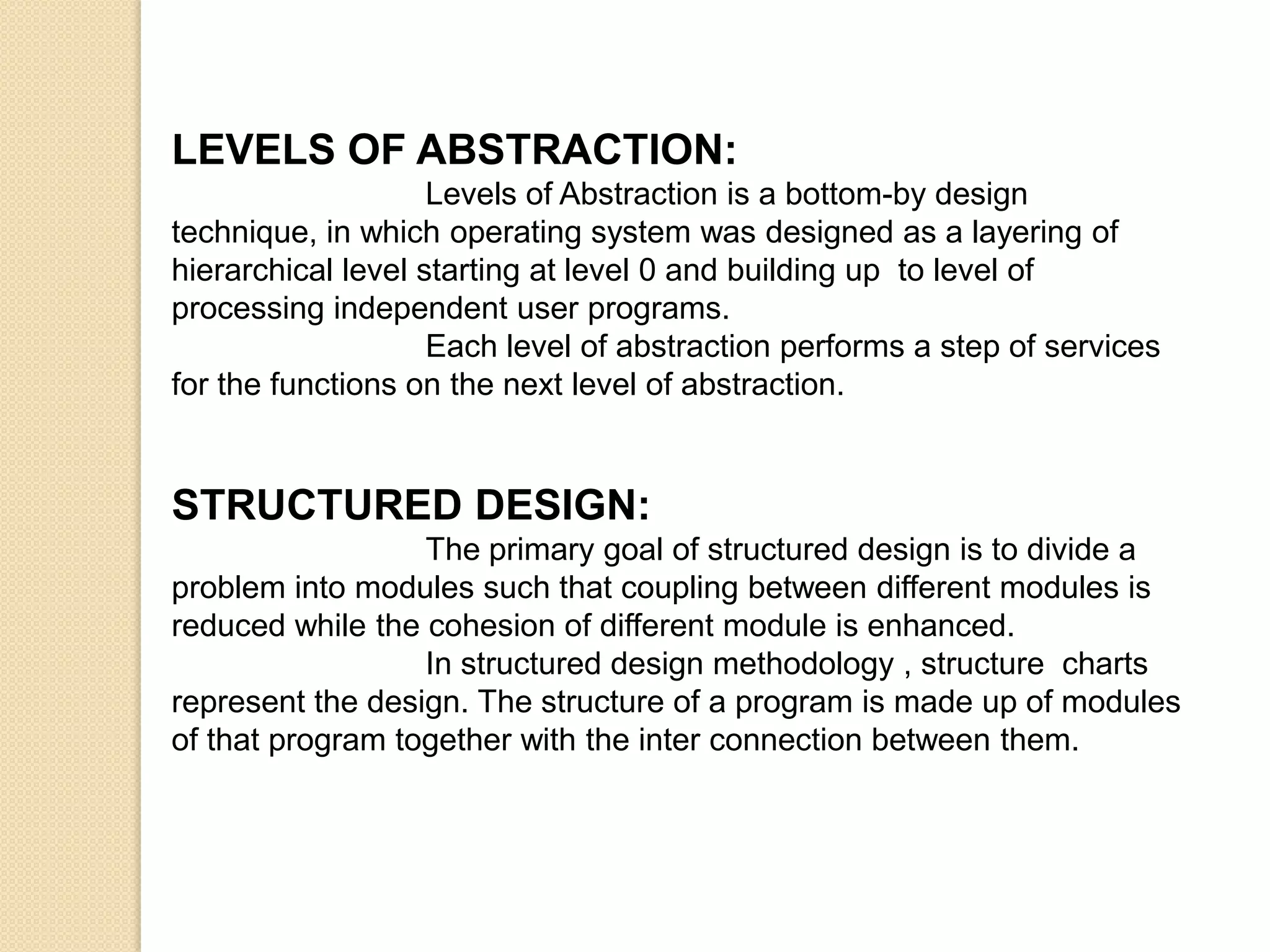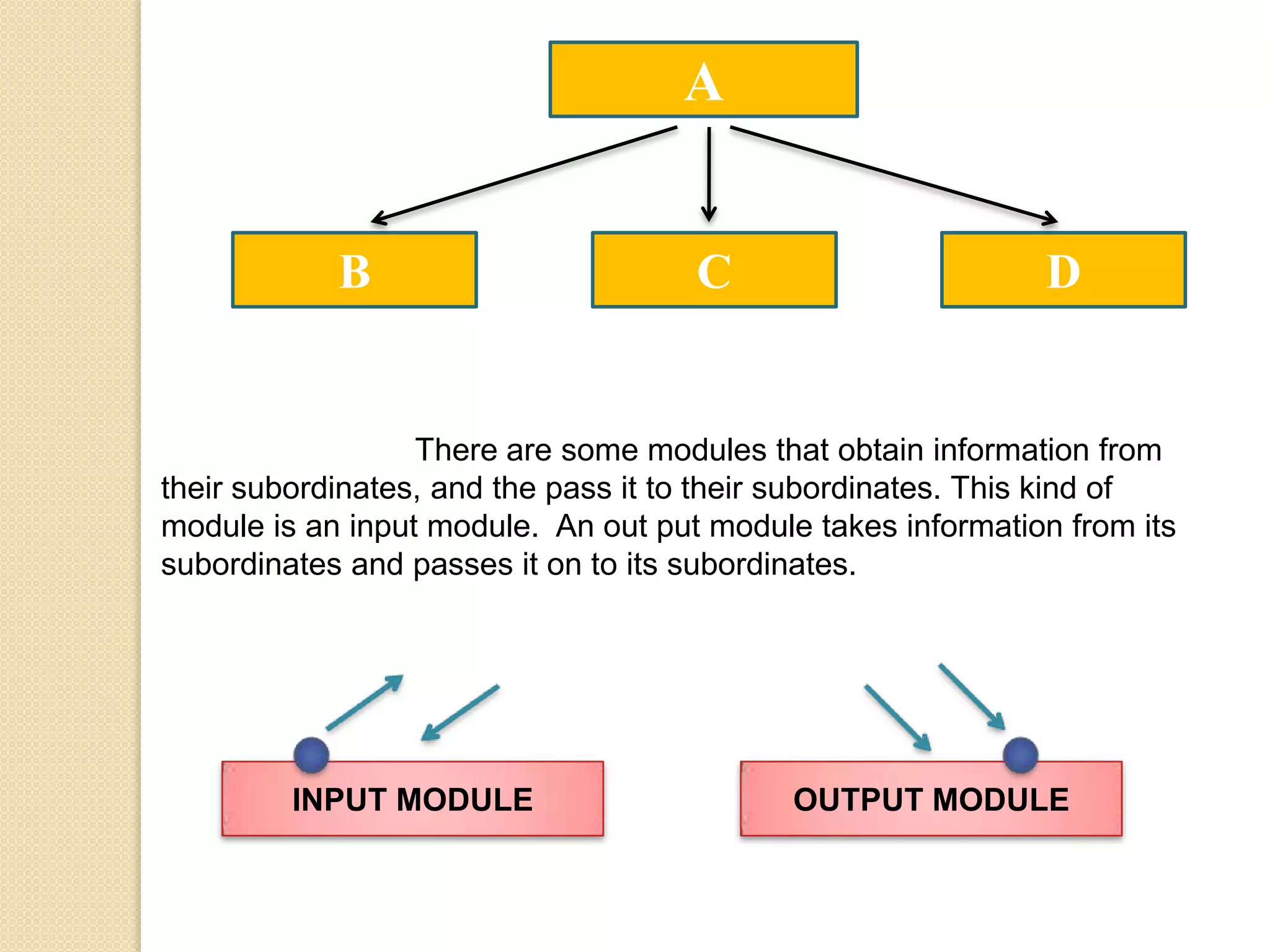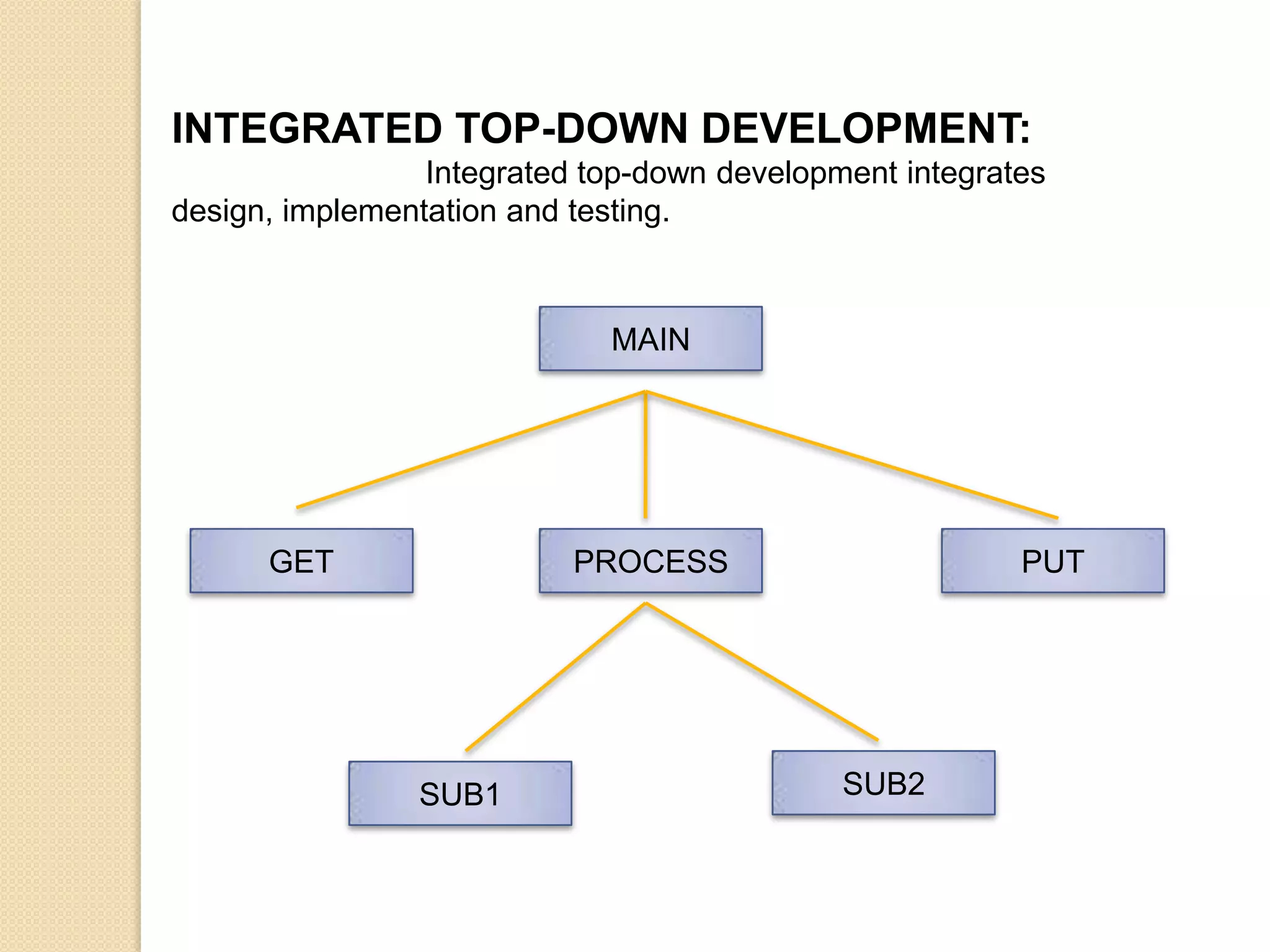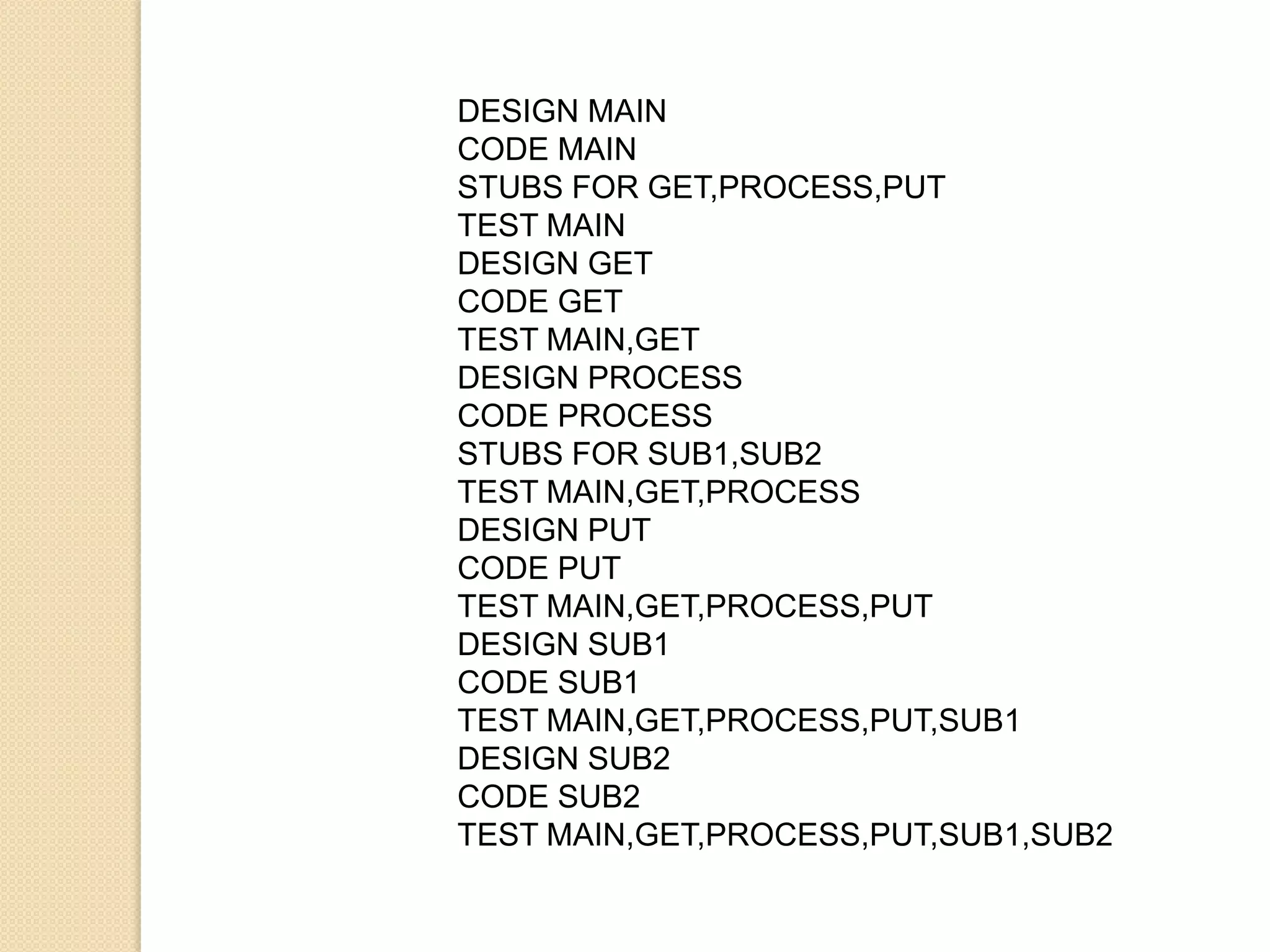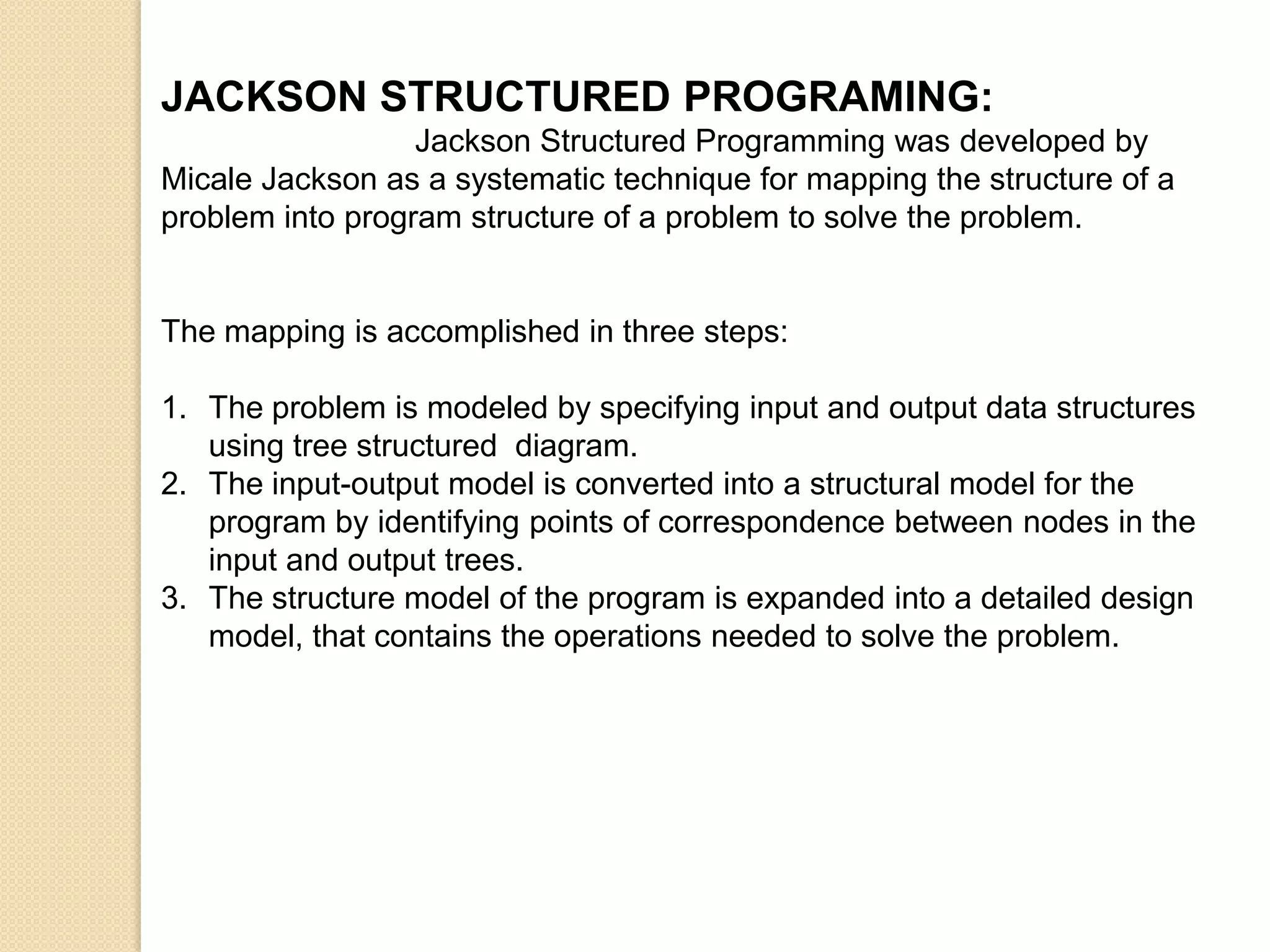The document discusses several design techniques for software development including top-down design, bottom-up design, stepwise refinement, levels of abstraction, structured design, integrated top-down development, and Jackson structured programming. Top-down design starts by identifying major modules and decomposing them into lower level modules. Bottom-up design first identifies primitive objects, actions, and relationships. Stepwise refinement involves decomposing design decisions to elementary levels in small increments.
